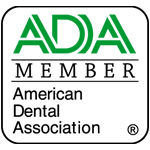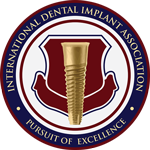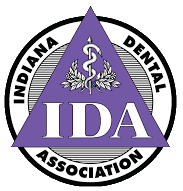
ROUTINE PROFESSIONAL DENTAL cleanings by your dental hygienist include scaling, or the careful removal of plaque and tartar from around the gumline. Tartar in particular can only be removed at a professional cleaning, as brushing and flossing alone can’t do the trick. However, if you have symptoms of gum disease, your teeth may need an even more advanced cleaning called dental scaling and root planing.
The Effects Of Gum Disease
Healthy gums fit snugly around the teeth, providing a barrier that keeps bacteria away from the roots. When gums become diseased, they begin to pull away from the teeth, forming deeper pockets where bacteria can grow. That’s how plaque and tartar can build up beneath the gumline.
Check out this video for the warning signs of gum disease:
What Is Dental Scaling And Root Planing?
When you brush your teeth, you’re cleaning the visible surfaces. Dental scaling and root planing is a deeper cleaning. Dental scaling gets rid of all plaque and tartar above and below the gumline, and root planing smooths out any uneven areas on the surfaces of tooth roots so that bacteria will have a harder time sticking and gum tissue will be able to heal effectively.
This kind of deep cleaning has been described as the gold standard of treatment for patients with gum disease. To get the gums healthy again, all that gunk needs to be cleaned out, which is what dental scaling and root planing does. While routine scaling helps prevent gum disease, scaling and root planing is a non-surgical treatment for existing gum disease. In cases of severe periodontitis, it may be recommended before gum surgery.
Removing Tartar Is Like Pulling A Splinter
If you’ve ever had a splinter in your finger, you know that getting it out isn’t very comfortable, but as soon as it’s gone, you feel instant relief. Dental scaling and root planing is the same way. It may require multiple appointments and a local anesthetic to eliminate discomfort, but it leaves your teeth and gums feeling wonderful.
Afterward: Taking Care Of Your Gums
Getting your gums healthy again is a process, and the dentist is your best resource. After your periodontal treatment, whether it’s surgical or just scaling and root planing, we’ll want to pay close attention to your gums through regular maintenance visits. Every two to four months, you’ll come in for routine cleanings and examinations where we check the pocket depth of your gums.
Getting Your Healthy Smile Back — And Keeping It!
The best treatment for gum disease is prevention, whether you’ve had it before or not. A good oral hygiene routine is critical, so make sure you’re brushing the inside, outside, and chewing surfaces of your teeth twice a day, flossing daily, replacing worn out toothbrushes, and scheduling regular appointments with us. Avoiding smoking will also help you keep your gums healthy.






